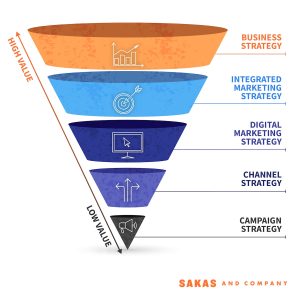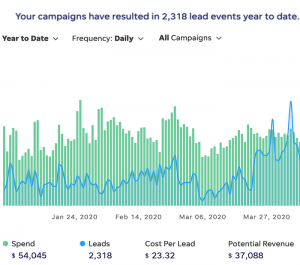If you polled a group of marketing experts and asked them to name their favorite type of lead, one response would clearly stand out: Referrals.
Referrals aren’t just the channel-of-choice for marketers, either. In fact, a University of Pennsylvania study found that referred customers are more loyal and profitable — by a 16% margin — than their non-referred counterparts. And our own research conducted in partnership with Nielsen’s Harris Poll Online revealed that 82% of Americans seek recommendations from friends and family when considering a purchase.
Thing is, you probably already knew referrals were incredibly valuable. But do you have a strategy in place to track and measure them? Are you modeling your program — if you have one at all — after proven best practices?
In the eyes of many marketing leaders, referrals are viewed as an organic byproduct of the company doing its job. The thinking is that the combination of a great product and excellent service will naturally yield a steady flow of referrals.
The problem with that assumption? Research suggests it’s not true.
While referrals do happen organically, research by Texas Tech University suggests they’re never a given — even if customers love your products and services. In fact, Texas Tech’s study found that while 83 percent of customers say they’re willing to provide referrals after a positive brand experience, only 29 percent actually do.
Why the big difference? Well, the chasm exists for many reasons, but it’s often exacerbated by a failure to properly prioritize and manage a referral program (assuming your company has one at all). By contrast, businesses that develop structure and process around cultivating and scaling referrals see much different (read: better) results.
Specifically, the brands that get referral marketing right adhere to few essential best practices. Here are 3 strategic and tactical ways to implement and manage a results-driven referral program:
1. Incorporate referrals into your overall marketing strategy.
The best referral marketing programs share a common thread: Referrals are embedded into every aspect of the user experience. Referral calls to action are included in newsletters and blogs. Employee email signatures feature referral messaging. And the referral program is fully integrated with other critical systems (customer-relationship management, marketing automation, eCommerce technology, point-of-sale systems, optimization tools, etc.).
How to apply this: For referrals to consistently deliver bottom-line results, they must be woven into of how your team thinks and operates. Without consistent focus on how referral marketing can be applied to other channels and campaigns, you’re largely at the mercy of chance. When your team has any discussion about marketing campaigns, make sure word-of-mouth is part of it.
2. Continuously test, evaluate, and optimize referral campaigns.
Once you get a referral marketing program up and running, it’s easy to fall into the trap of assuming the engine will run itself. That’s a mistake. Like all strategic marketing initiatives, referral marketing programs thrive in an environment of perpetual optimization.
Your team should be constantly measuring and evaluating referral conversion metrics and fine-tuning the strategy to optimize results.
How to apply this: This is where referral marketing software can be enormously helpful. With the right tool (and the right integrations), your team will feel empowered to experiment and iterate. Over time, the analytics created by that process will shed light on clear trends that help you see the activities, channels and customer personas that are driving the best results.
3. Make it incredibly easy to find and use your referral program.
Here’s an existential question to answer: If you have a referral marketing program in place and no one knows about it, does it really exist?
If your referral program isn’t public facing or it’s difficult to use and share with the click of a button, then you’ll severely limit your performance. The most successful brands feature their referral programs on their website, in mobile apps, and across highest-performing marketing channels — and they ensure the referral experience is painless and seamless.
How to apply this: To create a super simple, enjoyable referral experience for your customers and advocates, push your team to answer these questions:
– Where and when will customers want to share or talk about your brand or products?
– Are you requiring your ambassadors to do the heavy lifting to find friends who might be interested in your company?
– Is the referral program easy to find and share via mobile devices?
– Are you able to quickly pay out referral incentives — and do so in the way your ambassadors want to receive them (i.e., cash, loyalty points, vouchers, etc.)?
As a marketing organization, your goal should be to make the referral process as enjoyable as any other brand touchpoint. When you do that, you’ll see an exponential rise in the number of ambassadors — customers, fans, affiliates, influencers, advocates, etc. — willing to promote your brand.
Business & Finance Articles on Business 2 Community
(30)








